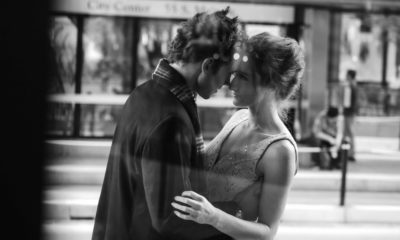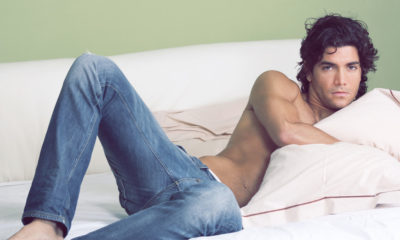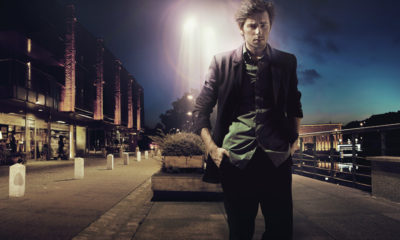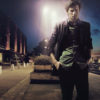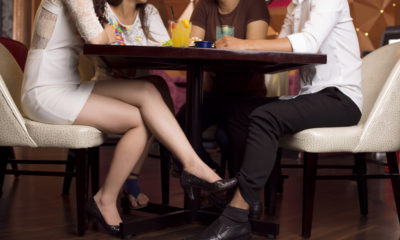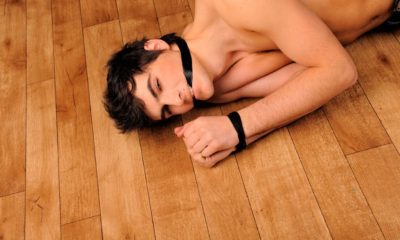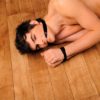Exciting Escapades
IDAHOT Day: No One Must Ever Know
“I want to be famous” he tells me. “And with looks and a body like that, my young friend”, I thought, “You could be famous in about two seconds!” What I said, however, was: “Famous for what?” meaning, for singing? for acting? for writing? for what? He answers: “So I can be rich” “But that’s a result,” I tell him; “It’s the result of DOING something or BEING something.” “I’ll get an agent,” he goes on, not answering my question, “and the agent will make me even more famous and richer.” Boringly, I implore him once more: “But you have to have an agent for writing, or for acting, or for SOMETHING. What will you have an agent FOR?” With two enormous, deep, soulful, sparkling dark-brown eyes that a Rudolph Valentino would envy, he just looks at me uncomprehendingly and changes the subject.
Now if this dialogue had taken place in Hollywood, or even New York, it would not have surprised me. In fact, this dialogue took place in a small village in Southwestern France, in French, and the young man, Philippe, speaks rapidly, forcefully, and remarkably unselfconsciously. His voice is husky, “with a sexy, throaty, buzz to it, and his conversation is rapid, sure, and peppered with trendy slang.
I’ve known him for about three years, having perceived him around and about the village. First I noticed him for a regal stance, a ramrod-straight carriage, an angular face with remarkable cheekbones, large, deep eyes, and a dark slender beauty enhanced by a superb, innate sense of movement. Later on I gave rides to him and some of his chums hitch-hiking from the village to one or other of the larger cities and towns nearby. Finally I got to know him better as the close friend of another youth who came from northern France to live in my house during a summer vacation.
The truth is that I lusted after Philippe since first seeing him. He didn’t look or act like any of the other village boys. He was taller, more stylish, outgoing, and talkative. Also very full of himself. Two years ago, a group of us went skinny dipping in the river, and I discovered that he looked even better naked than dressed in the baggy levis, loose t-shirts, and mounds of cheap silver jewelry so much in vogue then. I took photographs at the time, both color and black and white, clothed and unclothed. Never shy, he was more than pleased with the results of his modeling. Our friendship has grown slowly, and there’s a kind of jet lag between us culturally, educationally, socially, emotionally, as well as a considerable age difference. All those differences make our approaches and distances odd and fascinating, for him as well as for me. We’re very different animals.
Since I first met him, he’s been an apprentice to a baker, he’s quit school, he’s been in and out of the army, and twice already he’s been engaged to be married. Subsequent to a knife fight with an Arab buddy in the barracks, during which he was wounded in the knee, he was hospitalized for most of his military service. Endlessly bathed and tenderly tended by a brigade of military nurses in a hospital near Bordeaux who were only too pleased to nurse him back to health from a serious blood infection, he emerged with a slight limp which somehow makes his appearance even sexier. Released from the hospital, he spent his last several months in the military in an office shuffling papers, and his advisors are now requesting that he be awarded a full pension as a wounded war veteran. Philippe just turned twenty.
Having returned to the village four days ago after an absence of almost a year, I was pleased to see Philippe shortly after arriving. 1had gone out for an early jog, partly to fight jet lag; partly because if I don’t do it early in the day, I don’t do it at all, and partly because the morning was slightly misty and cool, a comfortable temperature before the heat of the day makes running a chore. Several kilometers out of town, a truck passed, and I perceived Philippe sitting on the deck, in the rear. He noticed me, as well, and we waved. I figured he’d stop by later in the day, but he didn’t show up until evening, just before dinner. I was very pleased to see him. He gave me a big hug and came into the kitchen where I was in the last stages of preparing a meal for Jeannette and Michel who were getting ready elsewhere in the house. I asked Philippe to join us, but he declined since he’d already dined and said he’d come back later for a coffee. He returned, almost on the dot of ten thirty, and we all sat in the living room while he recounted his life and army adventures during the past year. After an hour or so, Michel went home to sleep, and Jeannette, still suffering from jet lag, retired to her room. Philippe and I were alone for the first time in two years.
A native Californian, Angus Whyte first lived in San Francisco in the mid-sixties following his graduation from U.C. Berkeley. After graduate school at the University of Washington, with a Master's degree in French and Music, he was awarded a Fulbright Teaching Scholarship to France, later contracted with the U.S. State Department to teach mobile cinema in the Congo Republic, and subsequently studied baroque music and harpsichord at the Amsterdam Conservatory and the Salzburg Mozarteum Academy. From 1973 through 1981 he operated the Angus Whyte Gallery in Boston, Provincetown, New York City, and Washington, DC. After completing the Institute of Arts Administration program at Harvard, he served as Director of Special Events at Art Center College of Design in Pasadena from 1983 until 1990, during which time he was active on the boards of the Brody Arts Foundation, Pacific Serenades, and the California Confederation of the Arts. Following a sabbatical in France from 1990 through 1993, where he renovated ancient stone buildings in Périgord, southwestern central France, Whyte returned to San Francisco, where he served as development consultant to the the capital campaign of the LGBT Community Center Project. From 1997 through 2012 he directed a philanthropic organization, Art for Healing, whose mission was to collect and place original works of art in hospitals and healthcare facilities.
Married several times to thomas grexa phillips, his book of memoirs "After-Dinner Tales" was published in 2013, and presently he is working on his next book of stories.







